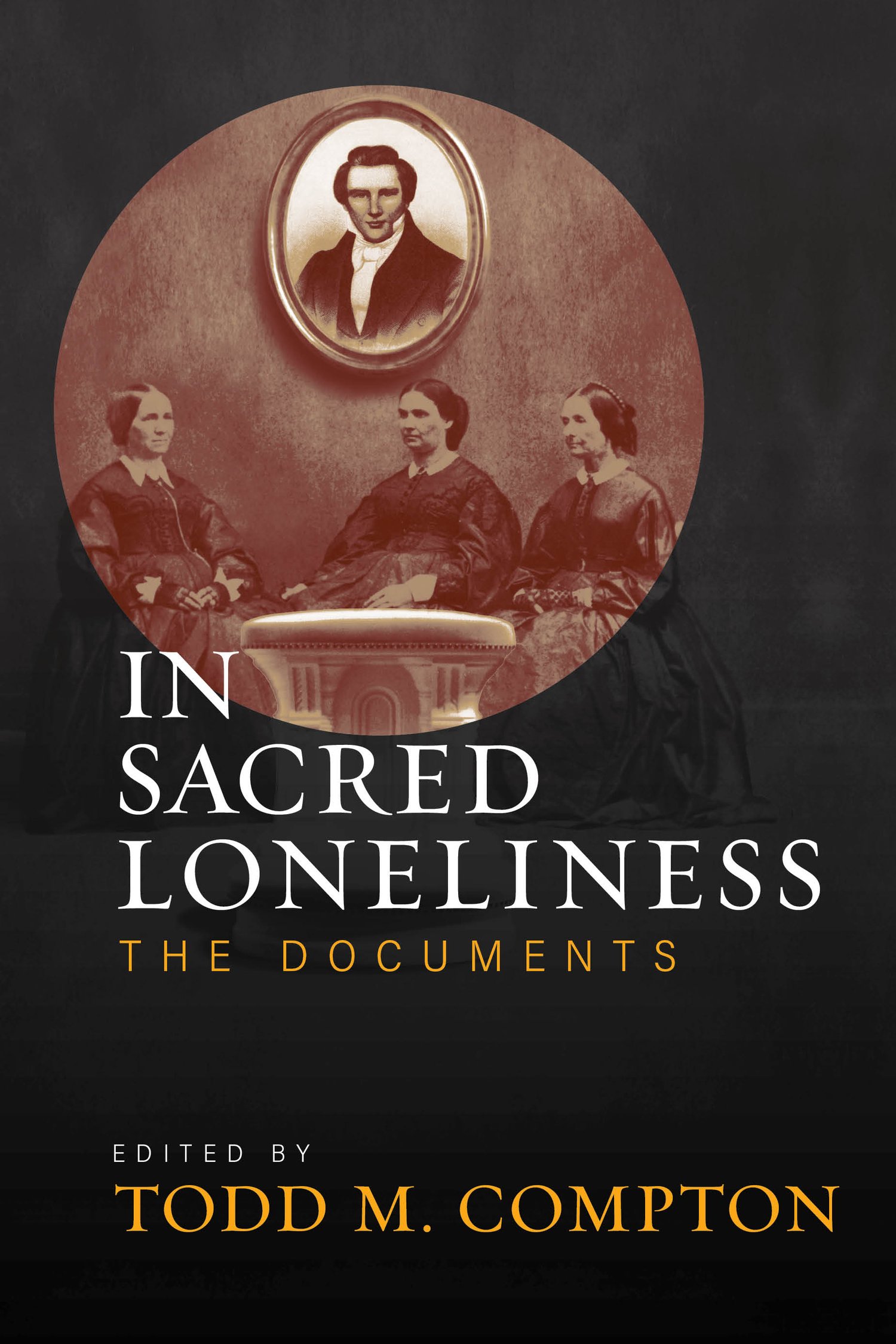
Review
———-
Title: In Sacred Loneliness: The Documents
Author: Todd Compton
Publisher: Signature Books
Genre: Mormon Studies
Year Published: 2022
Number of Pages: 886
Binding: Hardback
ISBN13: 978-1-56085-448-7
Price: 39.95
Reviewed by Cheryl L. Bruno for the Association for Mormon Letters
At a conference earlier this year, author Todd Compton previewed his book, In Sacred Loneliness: The Documents. It’s a compilation of many of the documents (diaries, letters, memoirs, interviews, and legal testimony) written by the women who were sealed to Joseph Smith that Compton used in writing his 1997 work In Sacred Loneliness: The Plural Wives of Joseph Smith. For his conference talk, Compton chose several women to perform readings from the book, and I was one of them! I was given two passages to read: the first was an anti-polygamy screed by Ina Coolbrith:
I think I see myself, vowing to love and honor, some old driveling idiot of 60, to be taken into his harem and enjoy the pleasure of being his favorite Sultana for an hour, and then thrown aside, whil’st my Godly husband is out Sparking another girl, in hopes of getting another victim to his despotic power. (p.127)
This was juxtaposed with a defense by Eliza Partridge Smith Lyman:
I am not afraid to say that it is one of the most pure and holy principles that has ever been revealed to the Latter day Saints, and one that is necessary to our exaltation. (p. 488)
These really pointed to the range of feelings nineteenth-century Mormon women experienced toward the principle of plural marriage taught by their prophet leader.
Many of the accounts in this book have not been widely available, so the compilation is an excellent resource. But further, the book is extremely readable. Compton chose documents that preserve the voices of these women not only on the subject of marriage to Joseph Smith but within the context of their lives, which were rich and fascinating.
Compton devotes a chapter to each of twenty-one wives of Joseph. The table of contents is a charming piece of poetry in itself. The chapters are named for the women and include a snippet quote, for example:
LUCY WALKER (SMITH KIMBALL)
“Every drop of Scotch in my veins”
Chapters begin with a brief introduction of the woman, a description of the representative documents he chose to include, and an explanation of how they add to our understanding. These are written in Compton’s stylish prose, which is often overlooked because of the focus on the words of the women themselves. But I’d like to call attention to the compiler’s own skill because it is so elegant:
The short autobiography of Desdemona Catlin Wadsworth Fullmer Smith Benson McLane (1809-86) is a religious text. While some religious autobiographies emphasize transformation from sinner to convert, Desdemona highlights her spirituality as a young child. This is also a very Mormon document, as it is full of miracles and revelations. As a child, she has a prophetic dream of Mormons marching into the wilderness where they can serve the Lord in freedom. While praying about which church she should join, she falls to the ground senseless, then hears a voice saying, “Stop yet a little longer there is something beᵗᵗer for you yet.” This is the autobiography of a seeker; Desdemona was one of many spiritually restless Americans, searching the Bible for truth and evaluating different religious movements to find the true community of Saints…In Desdemona’s autobiography, she casts herself as the heroic protagonist, doing spiritual battle with apostates…persecutors, leaders of Protestant denominations in Missouri, and her last husband, Harrison McLane, who falls from belief in the LDS Church (633-34).
Compton’s Documents book is extremely important at this point in time because of what is happening among armchair/social media historians who investigate Joseph Smith’s polygamy. Many have wrongly concluded—because Joseph publicly denied his polygamous practices—that he never took plural wives. These documents, though not contemporaneous, detail the lived experiences of the women who were sealed to and participated in marital relationships with the Mormon prophet. These first-hand accounts are compelling and cannot easily be set aside. In fact, I dare anyone to read this entire book with the enthralling and persuasive words of these Victorian-era ladies and then continue to claim that Joseph was not personally involved in plural marriage. I just don’t think it’s possible.
A gold mine for the Mormon studies researcher, these documents are supplemented by appendices listing and providing concise biographies of the plural wives of Joseph Smith, Brigham Young, and Heber C. Kimball, and a register of prominent persons, all of which I will return to over and over. Extensive footnotes and bibliography are also careful and useful. How else would we know about:
Wolfe, Thomas J. “Steaming Saints: Mormons and the Thompsonian Movement in Nineteenth-Century America.” In Disease and Medical Care in the Mountain West: Essays on Region, History, and Practice, ed. Martha Lee Hildreth and Bruce T. Moran, 18-28. Reno: University of Nevada Press, 1998.
I cannot say enough about how important In Sacred Loneliness: The Documents is, along with its companion first volume, in contributing to our understanding of the amazing women who had the dubious honor of uniting in marriage with the Mormon founder, Joseph Smith, Jr.
